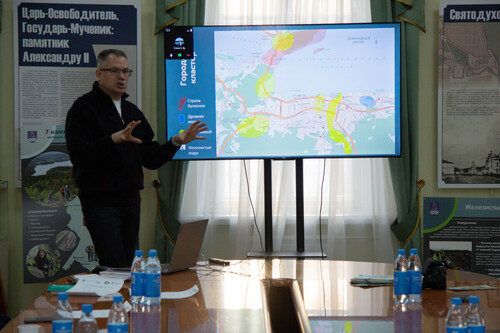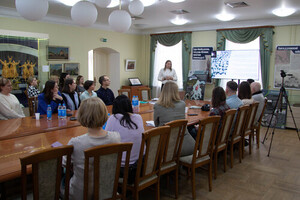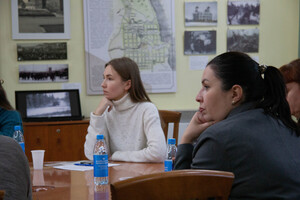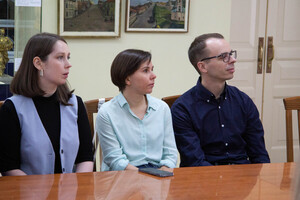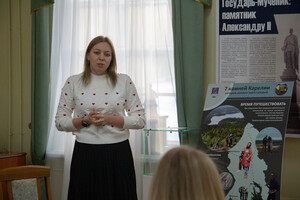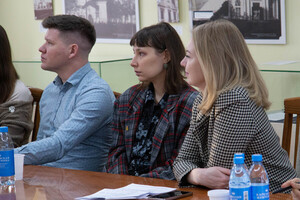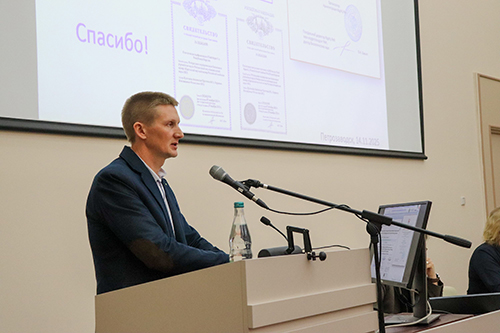There are about 1500 geological and mining heritage sites in the region, and implementation of the project will help fulfill some economic tasks, first of all, the development of industrial tourism, as well as raising interest in the history of the land and career guidance for the younger generation, - emphasized Svetlana Astakhova, Acting Minister of Industry and Trade of the Republic of Karelia, in her welcoming speech.
Ksenia Chumak, the Project Manager, told about the main lines of activities: it is planned to develop an upskilling program for guides on industrial history tourism and to popularize the mining heritage among local people. Thus, a number of popular science events will be organized for schoolchildren and students: quizzes, exhibitions, scientific education lectures, pilot tours.
The main partner of the project is the Institute of Geology of the Karelian Research Center RAS
— The geology of Karelia has been studied at an excellent level. A huge amount of information has been collected over more than 60 years of the Institute's work, and we realized that we need to tell the citizens how interesting the region we live in is. Due to the geological evolution and glacial history of the land, Karelia has unique features that distinguish the region from its neighbors. Ancient rocks that are 3.2 billion years old lie on the surface, and you don't need to drill to see them. Furthermore, the republic offers quite comfortable infrastructure for visiting these places, - said Sergey Svetov, Director of the Institute of Geology KarRC RAS.
Active work to popularize geology among the public has been underway for several years. In 2021, the book «Geological Heritage of Karelia» was published. This historical-geological guide to Petrozavodsk and the central part of the republic contains 21 tours of accessible sites. These include ancient volcanic formations, schist and shungite rock deposits and others. The edition was recognized as the “Book of the Year in Republic of Karelia” in the Light of Science category.
Also, the children’s comic book for family quality time “Educational Journeys of Karelian Animals” was published. The number of hard copies is limited, but can be downloaded from: http://resources.krc.karelia.ru/ig/doc/publ/danilova_svetov_komiksy_s.pdf.
Sergey Svetov announced a continuation of the comic book: the new edition will tell about ancient life in the region's territory, about the formation of bog ores, glacial relief of Karelia, waterfalls and granites.
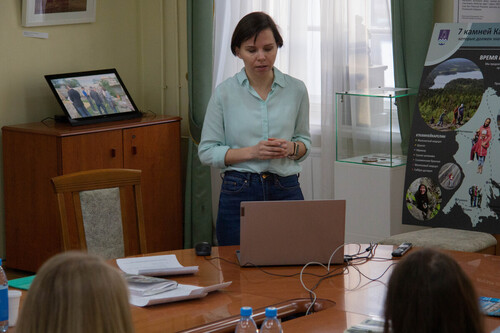
Speaking is Natalia Nesterova, Senior Researcher at the Precambrian Geology and Geodynamics Laboratory, IG KarRC RAS
Natalya Nesterova, Senior Researcher at the Laboratory of Precambrian Geology and Geodynamics IG KarRC RAS, told about the main activities planned by the Institute within the new project. A significant event will be the opening of a new exhibition “Karelia - History in Stone”. It will be on display at the National Library of Karelia from April 7 to April 28, 2025. A lectorium, master classes and quizzes will be offered for visitors.
— We will tell about the geological objects that convey the region's formation history. Previous year's experience has shown that residents and guests of the city are eager to learn about geology. Last each we organized the exhibition “7 rocks of Karelia everyone should know”, which was visited by 1500 persons. We introduced people to the most symbolic rocks of the republic: shungite, crimson and ferruginous quartzites, marble, gabbro-dolerite, Rapakivi granite and Solomenskaya breccia, — stressed the geologist.
Scientists believe that popularization of the geology of Karelia and creation of an atmosphere of scientific enlightenment not only promotes the general knowledge of the population about the nature of our region, but also inspires young people to choose a scientific career.
The Young Geologists Club Archean has been operating at the Institute of Geology KarRC RAS for many years. At its meetings, kids get acquainted with the history of the Earth and ancient organisms, learn to identify minerals and rocks: students have access to collections of hundreds of samples. During the field season trips to research sites are organized. The Archeans take part in geology contests and win prizes. Scientists also come to Petrozavodsk schools to give lectures.
— We see the first results of this work. Competition among applicants to the Geology major at the university has increased, — remarked Natalya Nesterova.




